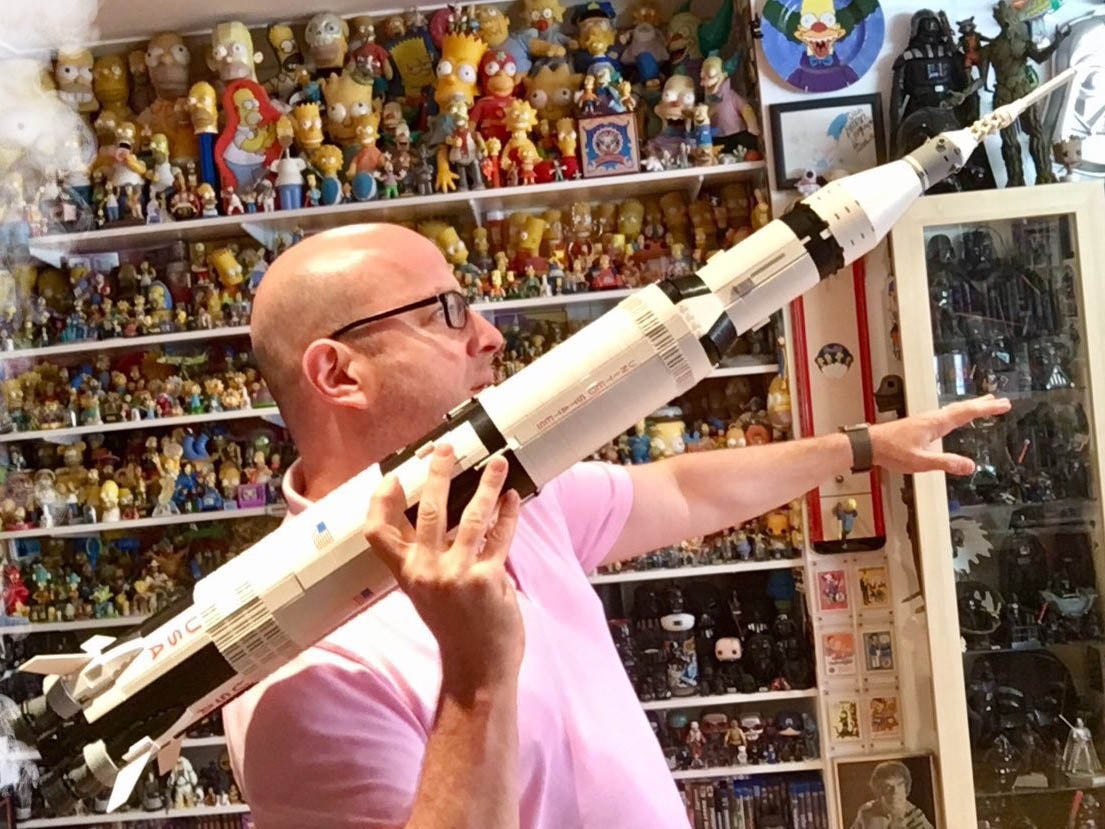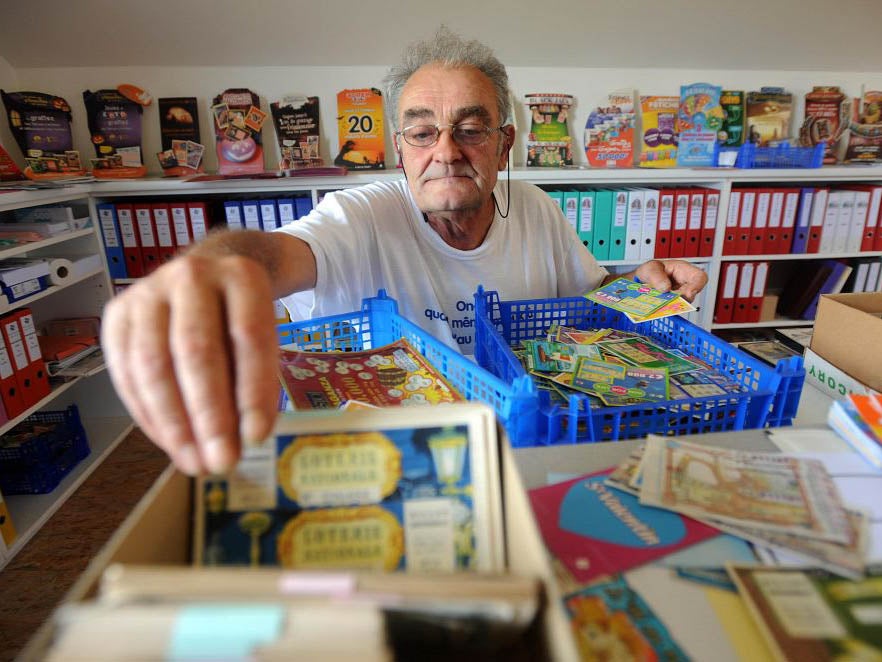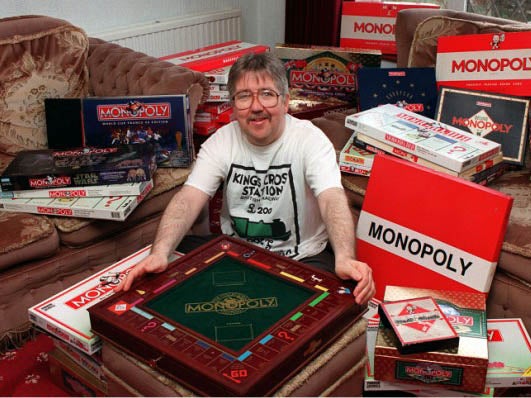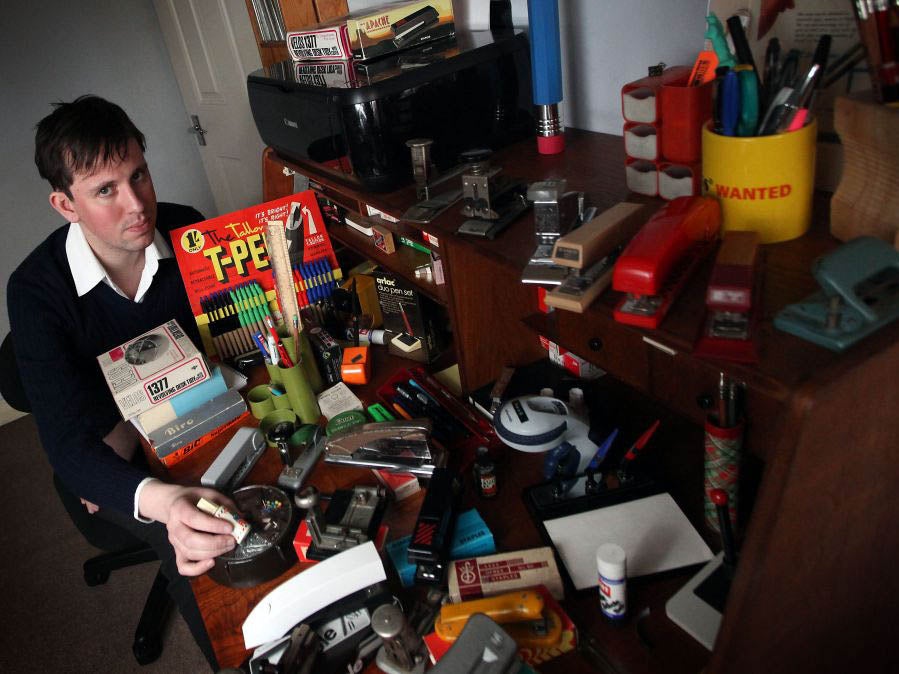Boys with toys: What is it with men collecting stuff?
Figurines, stamps, vinyls, butterflies – hoarding comes in endless forms. But why is it so often men who get the collector's bug?

Your support helps us to tell the story
From reproductive rights to climate change to Big Tech, The Independent is on the ground when the story is developing. Whether it's investigating the financials of Elon Musk's pro-Trump PAC or producing our latest documentary, 'The A Word', which shines a light on the American women fighting for reproductive rights, we know how important it is to parse out the facts from the messaging.
At such a critical moment in US history, we need reporters on the ground. Your donation allows us to keep sending journalists to speak to both sides of the story.
The Independent is trusted by Americans across the entire political spectrum. And unlike many other quality news outlets, we choose not to lock Americans out of our reporting and analysis with paywalls. We believe quality journalism should be available to everyone, paid for by those who can afford it.
Your support makes all the difference.The other day a package arrived, wrapped in brown paper. Inside was a shoebox, and inside that were 21 slightly musty-smelling comics from the late 1970s.
Well, what could I do? The whole lot was a fiver on eBay, and amounted to almost half of the 46 issues DC comics released of the horror anthology title Secrets of the Haunted House. You can’t turn down a bargain like that, especially when you’re a collector.
Comics and books are my particular collecting vice, and always have been. All my life I’ve carted big boxes of printed ephemera around from home to home. If you were to go into my attic right now you’d see veritable mountains of them. In fact, it’s such a horrific sight that DC could probably have made a comic about it in the 1970s.
Indeed, when I first met my wife, I think she was rather disquieted by the fact that my spare room was taken up by a literal ziggurat of books, like some kind of slightly weird obsessive who was wont to built shrines to the things he loved. I was also eating all my meals with a cheese knife and fork combination at the time, but that’s another story.
People love to collect. Football programmes. Vinyl records. Stamps. Postcards. Coins. Butterflies. There used to be a man in our street who would never throw away tin cans, but instead washed them and stacked them in his back yard, labels peeled off. Nobody ever knew why, as this was decades before recycling became the norm. We called him Tin Can Tommy, obviously.
There are hosts of magazines for collectors. Record Collector. The Book Collector. Goldmine, for the vinyl record and music memorabilia enthusiast. Sports Collectors Digest, for those who cannot live without American Football and baseball cards. Autograph Collector Magazine. Collectors Gazette, for toy and model collectors. Whatever your particular collecting fetish, there are going to be other people with the same urge, and a community to be part of, and probably a monthly journal to feed your obsession. Apart from Tin Can Tommy; sadly I imagine he was something of a lone wolf in the world of collecting.
But what drives us to collect? What is the force that impels us not to just have one of something, but to have two, a dozen, a hundred of them, all slightly – and probably, to the uninitiated – imperceptibly different from each other?
In some far off, prehistoric time, did a Neanderthal rise, panting, from besting a sabre-toothed tiger in bloody combat and see the shattered fang of the beast on the parched, primordial earth, and think, “You know what? That’ll look great on that little rocky shelf in my cave. And you know what would look better? A whole row of tiger teeth.”

I’m going to stick my neck out here with a bit of a sweeping generalisation, but my bet is that most people who consider themselves collectors are men. I’ve been in homes where a woman might have a collection of Capodimonte porcelain figurines, or shoes, but there seems a subtle difference between those and what most men traditionally collect. Shoes are useful, nay – vital; porcelain figurines have an aesthetic, decorative purpose.
What are seen as traditionally male collecting pursuits are not necessarily for use or display. A comic collector might not particularly feel the need to read the rare issue he obtains of, say, Uncanny X-Men, he just wants a complete run of issues.
That’s not to say there aren’t women who collect any of the items mentioned above, but in my own experience it’s mainly men who “collect” while women just… have stuff. When my Nan died, for example, we found in her pantry a couple of dozen boxes of Thorntons' toffee. This wasn’t because she collected them, but more that she hadn’t got the heart to tell me that her false teeth weren’t really up to the gift I’d been buying her religiously for Christmas ever since I was a small child.
But is there any reason for this apparent male-female split? According to psychologist and writer Dr Christian Jarrett, there might well be, at least anecdotally.
“I'm not aware of any research that's actually compared the gender balance among different types of collectors,” says Dr Jarrett, “but there are theoretical reasons for thinking that men may be more into collecting.
“From an evolutionary perspective, it is to men's advantage to advertise their ability to accumulate resources and there's some evidence that they use prestige items to signal their fitness to potential mates.
“Separately, psychologist Simon Baron-Cohen has argued that we all vary in how much we are systematisers vs empathisers and he says that, on average, men tend to be more inclined to systematising, which would be associated with collecting and organising things.

“More generally, research into gender differences in interests suggests that, on average, men are more into ”things“ while women are more interested in people. Note, these are averages and of course there is lots of overlap.”
Certainly, my wife has little sentimental attachment to things that aren’t useful, or aesthetically pleasing. She is quite happy to pass on to friends or charity shops books that she’s read, even ones she’s thoroughly loved, which is a thing that brings me out in cold sweats. How can you possibly know that you won’t need that book again, next year, next decade, the day before you die?
An alpha male among collectors is Marshall Julius. If you follow his Twitter account, @MarshallJulius, you’ll be treated to tantalising glimpses of his vast collection of geeky memorabilia, and on occasion shots of his mouth-watering Aladdin’s Cave in the South London home he shares with wife Ruta and their children.
“My wife is more a minimalist, and I think that balance is important,” says Julius. “If we were both like me, our house would be overrun by stuff. As for my kids, they have their own interests and a fair few things of their own, but I wouldn't describe them as collectors. I think they feel I've rather cornered the market in that interest, and they want to do their own thing.”

What does Julius collect? Anything and everything with a pop cultural bent. He says: “I’m 49 now, and have been a collector since I was six. That’s 43 years of furious gathering. I do it because I am compelled to do it. Compelled by the power of plastic. Compelled by the power of tin. Compelled to own pieces of the many things I love. To paraphrase The Exorcist's Father Merrin, the power of stuff compels me.”
He started out collecting badges, then magazines and comics such as Peanuts and Mad, then his eyes were opened to the world of Star Wars collectibles. He does have standards, though.
“Original trilogy only though, and for the last several years, strictly Darth Vaders,” he says. “I have a lot of old comics, mostly film tie-ins from the 70s and 80s: Star Trek, Indiana Jones, Planet of the Apes, Howard the Duck and countless movie adaptations.”
Unlike a lot of collectors, Julius is lucky enough to have space to put them proudly on display, where he can see and feel them. And, erm, other things.

“Fetishistically, I like to smell them from time-to-time,” he confides, “that musty, slightly dusty smell reminding me of countless blissful hours spent in comic shops and at weekend collector marts.
”When we moved into our current home, my patient and wonderful wife Ruta allowed me fill the largest room with my stuff, so long as it didn’t take over the rest of the place.
“I spent six months organising and displaying everything. Shelves stacked with Simpsons toys. Display cabinets loaded with Darth goodness. Every surface and corner filled with something colourful and borderline mental. Magnets. PEZ Heads. Stickers… It’s a constantly evolving work of great geeky art and I love it.”
Julius is a film critic, entertainment journalist and social media editor, and happily admits he’s “exploited my position to build my collection”, garnering autographed photos and original pieces of art from comic book legends.
But though collectables can often command high prices, especially toys that are in their original boxes, he isn’t in it for the money. It’s a labour of love, he says, adding, “Toys make a room come alive. I refuse to keep things boxed up though, and don’t care if opening precious packaging lowers the value of my stuff.
“Collecting should not be about investing. If you want to make money, buy shares or property. Collecting is about love and passion and the sheer giddy thrilled of being a nerd. I’d rather my collection space, my den as I call it, look like a museum than a shop.”
Of course, while collecting is a fun and (mostly) harmless activity, it is perhaps closely allied with a more serious issue of hoarding, which is often portrayed on TV shows such as Life of Grime, with people compelled to fill their houses with what appears to everyone else to be useless junk, often to the detriment of their emotional and physical health. Is collecting actually a problem?
Dr Jarrett says, “There is research suggesting that some conditions like autism and OCD are associated with collecting behaviour, but note the research I'm aware of is about “abnormal” or problematic collecting.”
Which is possibly what Tin Can Tommy, now long gone, was at least on the fringes of. Your stamp, coin or football programme collection is unlikely to lead to any serious compulsive behaviour, provided you keep it all in perspective.
Now, if you’ll excuse me, I’ve just had a notification on my phone from the eBay app that there’s a job-lot of early 1970s House of Mystery comics just been put up for sale, and I have to watch them closely for the next seven days…
Join our commenting forum
Join thought-provoking conversations, follow other Independent readers and see their replies
Comments